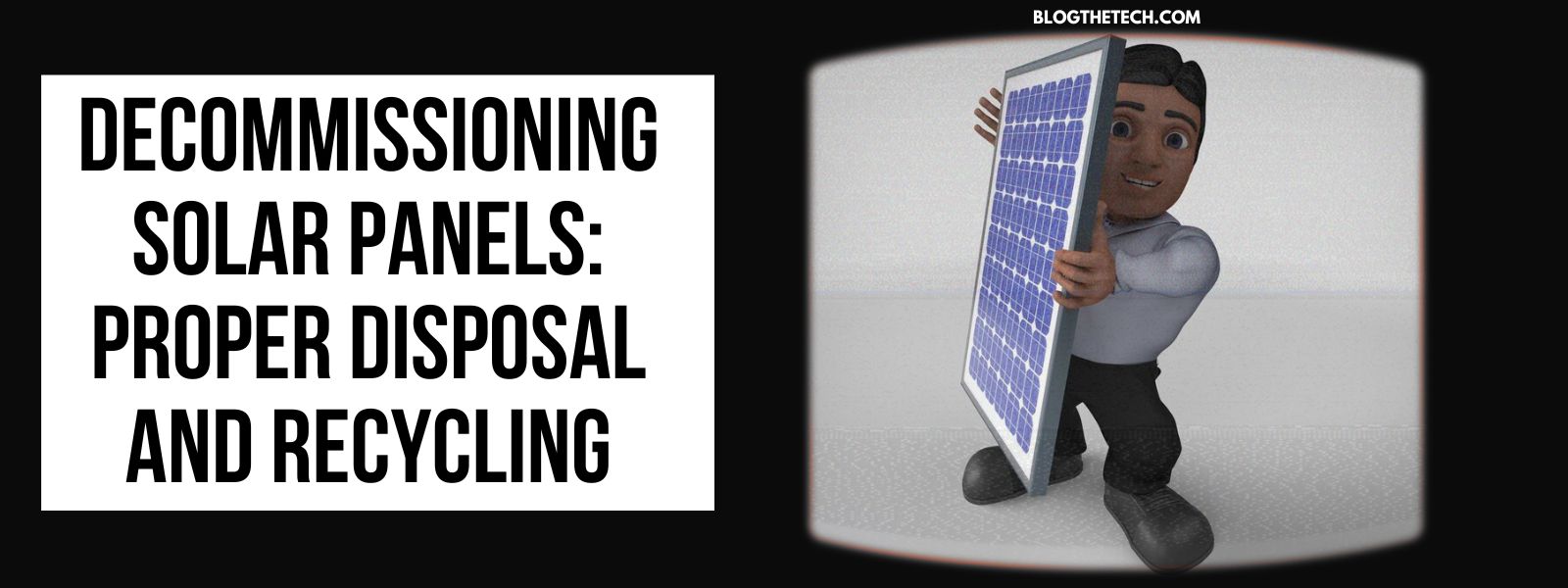The rapid growth of the solar industry has led to an increasing number of solar panel installations worldwide. As these panels age or become inefficient, they eventually require decommissioning.
Solar panel decommissioning involves the safe and responsible disposal or recycling of solar panels to minimize environmental impact.
This step-by-step guide aims to provide a comprehensive overview of the decommissioning process, emphasizing the importance of proper disposal and recycling.
Importance of Decommissioning
Proper disposal and recycling of solar panels are crucial for environmental sustainability. Solar panels contain hazardous substances such as lead, cadmium, and various chemicals that can be harmful if not handled and disposed of correctly.
By decommissioning solar panels, we prevent the potential leakage of these pollutants into the environment, ensuring the long-term health and safety of our communities.
Additionally, recycling solar panels helps to recover valuable materials, such as silicon, glass, and metals, which can be used in the production of new panels. This reduces the need for extracting and manufacturing raw materials, leading to energy and resource conservation.
Preparing for Decommissioning
Before beginning the decommissioning process, a thorough assessment of the solar panel system is crucial. Understanding the age, condition, and performance of the panels helps to determine the best course of action. This assessment includes evaluating any signs of degradation, physical damage, or efficiency loss.
Safety considerations are paramount during decommissioning. Identifying potential hazards such as live electrical wiring, unstable mounting structures, or damaged panels is essential. Furthermore, properly disconnecting the system from the power source not only ensures safety but also prevents any electricity leakage during the decommissioning process.
To comply with regulations and obtain necessary permits, it is essential to research and understand local regulations and requirements. Some jurisdictions may have specific guidelines for decommissioning solar panels, including waste disposal and recycling regulations. Obtaining the required permits ensures compliance with legal obligations and safeguards against potential penalties.
Disassembling the Solar Panel System
To begin the disassembly process, the first step is to power off the system. This involves shutting down the inverter and disconnecting the solar panels from the electrical system to eliminate any risk of electrical shock during the subsequent steps.
Once the system is safely powered off, the solar panels can be removed from the mounting structure. Care must be taken to detach the panels from the roof or the ground, ensuring minimal damage to the panels and the surrounding area. Proper handling techniques, such as using protective coverings or padding, are essential to prevent scratches, cracks, or breakage during removal.
After removing the panels, the next step is to disconnect the wiring and any other components, such as inverters or controllers, from the panels. This ensures a clean separation of the electrical system, making it easier for recycling facilities to handle and process the panels effectively.
Proper Disposal and Recycling
Once the solar panel system is disassembled, proper disposal and recycling are essential to minimize the environmental impact. Evaluating disposal options involves researching local recycling programs and contacting waste management services that specialize in handling electronic waste. Choosing a reputable recycler ensures that the panels are processed responsibly, meeting all environmental regulations.
Transporting the panels safely is crucial to prevent any damage or further degradation during transit. Proper packaging and securing methods, such as using appropriate containers and padding, should be employed. Compliance with transportation regulations, including permits and vehicle requirements, must be ensured.
When selecting recycling options, finding approved recycling facilities is vital. These facilities have the necessary expertise and technology to extract valuable materials from the panels while handling hazardous components safely. Hazardous materials, such as lead or cadmium, are disposed of properly, ensuring they do not pose a risk to the environment or human health.
For those who may not have the knowledge or expertise to handle the decommissioning process, it is advisable to talk to professionals from experienced solar panel decommissioning companies. These companies specialize in safely and efficiently decommissioning solar panel systems, ensuring compliance with all regulations and minimizing environmental impact.
Final Steps
After the removal and recycling process, site cleanup and restoration are necessary. Any remaining equipment or debris should be removed, and the area should be restored to its original condition. This includes repairing any damage to the roof or ground and returning any disturbed landscaping features.
Documenting the decommissioning process is crucial for future reference and potential regulatory audits. Keeping records of all actions taken, including dates, materials removed, and recycling documentation, provides accountability and transparency. These records can also be valuable for insurance claims or when selling the property.
Conclusion
Proper decommissioning of solar panels is vital for the environment and the sustainability of the solar industry. By following this step-by-step guide, individuals and companies can ensure the safe and responsible disposal and recycling of their solar panels. By prioritizing environmental stewardship in solar panel decommissioning, we contribute to a cleaner and more sustainable future.




